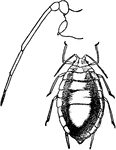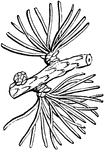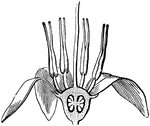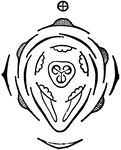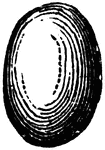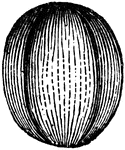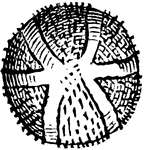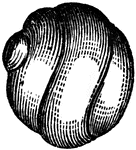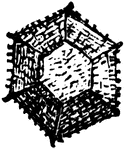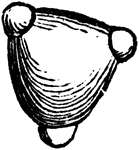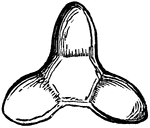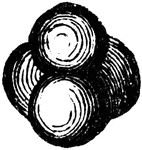
Dragon Tree
"A tree of the natural order Liliaceae, remarkable for the size which it sometimes attains, rivalling…

Pennatula Phosphorea
"A. Colony of Pennatula phosphorea from the metarachidial aspect. p, The peduncle. B, Section of the…

Governor
"Of all the contrivances for regulating the motion of machinery, this is said to be the most effectual.…
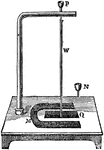
Wire Vibration
"Vibration of a wire. A conducting copper wire, w, is suspended by a loop from a hook of the same metal,…

Bryophyta
Funaria hygrometrica. Further stages of the development of the sporogonium enclosed in the calyptra…
Bryophyta
Funaria hygrometrica. Further stages of the development of the sporogonium enclosed in the calyptra…

Flax-seed
Section of a flax-seed magnified and divided flat-wise: turned round, so that the stem-end (caulicle)…

Early Flax Seedling
Growth of Flax seedling from a stem with two leaves and a bud, to a stem with several leaves and stem…

Moneywort
Piece of a flowering-stem of Moneywort with single flower successively produced in the axils of the…
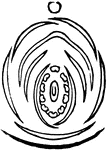
Papilionaceous Flower
Diagram of papilionaceous flower, with bract below; axis of inflorescence above.
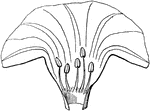
Morning Glory
Corolla of Morning Glory laid open, to show the five stamens inserted on it, near the base.

Lady's Slipper
Style of a Lady's Slipper (Cypripedium), and stamens united with it; the anther of the two good stamens;…
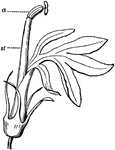
Lobelia cardinalis
Flower of Lobelia cardinalis, Cardinal flower; corolla making approach to the ligulate form; filaments…
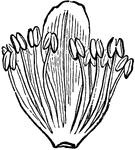
American Linden
One of five stamen-clusters of the flower of American Linden, with accompanying scale.
Stamen of Moonseed
Stamen of Moonseed, with anther cut across; this 4-celled, or rather 4-locellate.

Stamen of Pentstemon
Stamen of Pentstemon pubescens; the two-anther-cells diverging, and almost confluent.

Stamen of Mallow
Stamen of Mallow; the anther supposed to answer to that of Pentstemon pubescens, but the cells completely…
Stamen of Globe Amaranth
Very short filament bearing a single anther-cell; it is open from top to bottom, showing the pollen…

Stamens
Stamens of the mint family. Of a Monarda: the two anther-cells with bases divergent so that they are…

Hibiscus pollen
Magnified pollen of Hibiscus and other Mallow plants, beset with prickly projections.

Polllinia of a Milkweed
Pollen, a pair of pollinia of a Milkweed, Asclepias, attached by stalks to a gland.
Polllinia of a Orchis
Pollinium of an Orchis (Habenaria), with its stalks attached to a sticky gland.

Pistil of Saxifrage
Two simple carpals or pistil-leaves, united at the base only, cut across both above and below.

Pistil of common St. John's-wort
Compound 3-carpellary pistil of common St. John's-wort, cut across: the three styles separate.
Pistil of shrubby St. John's-wort
The same of shrubby St. John's-wort; the three styles as well as ovaries here united into one.
Pistil of Spiderwort
Compound 3-carpellary pistil of Tradescantia or Spiderwort; the three stigmas as well as styles and…
Pistil of Sandwort
Pistil of a Sandwort, with vertical and transverse section of the ovary: free central placenta.

Ovary of Frost Weed
Cross section of the ovary of Frost-Weed (Helianthemum), with three parietal placenta, bearing ovules.
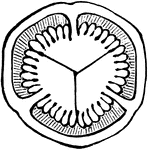
Hypericum graveolens
Cross-section of an ovary of Hypericum graveolens, the three large placenta meeting in the centre, so…


